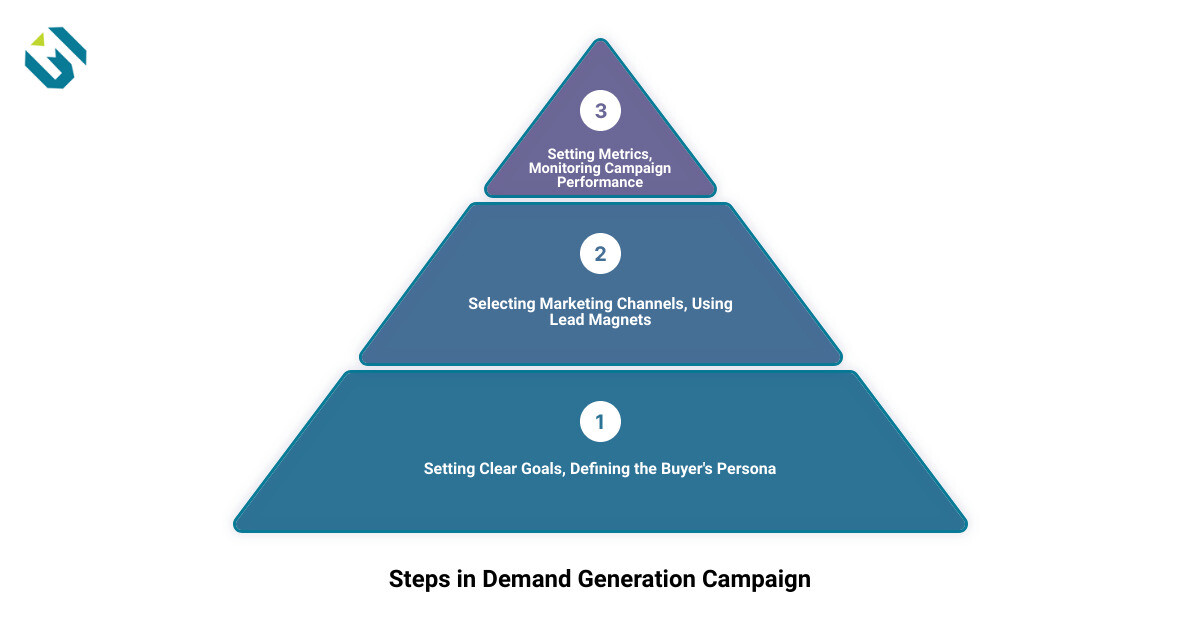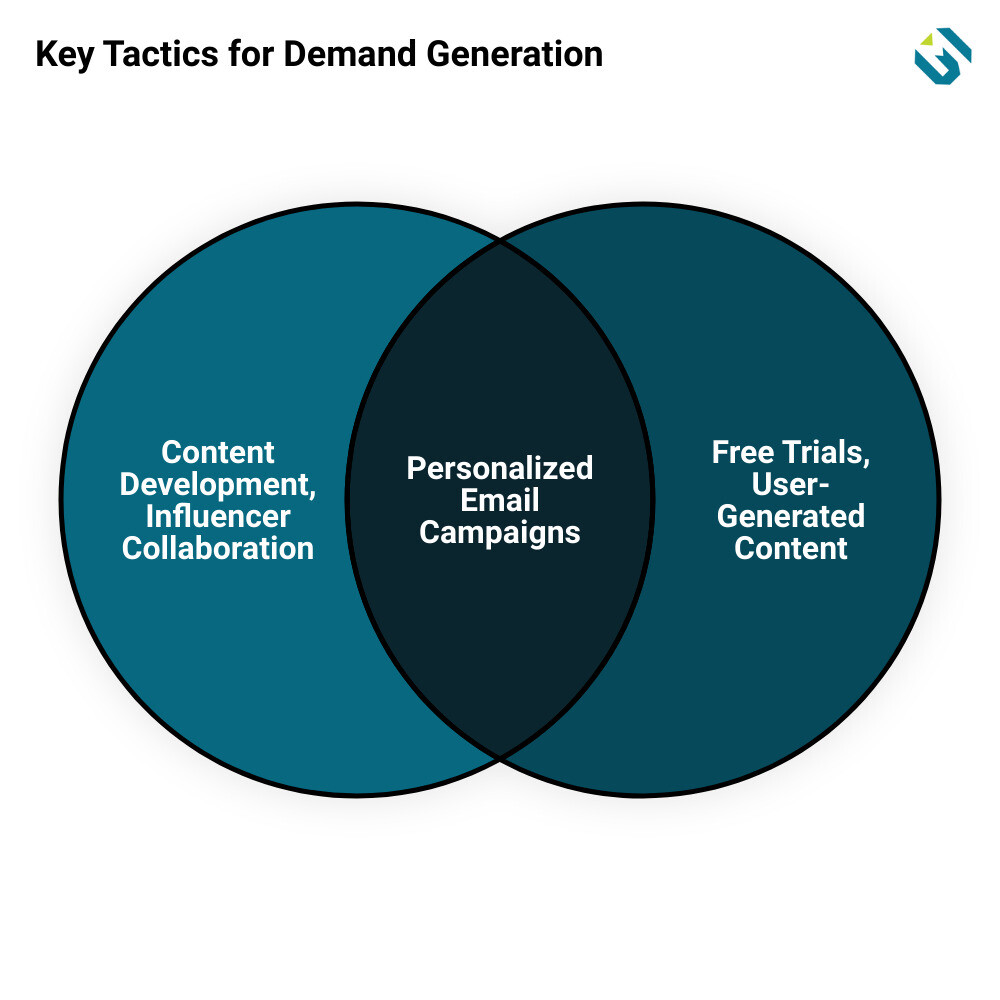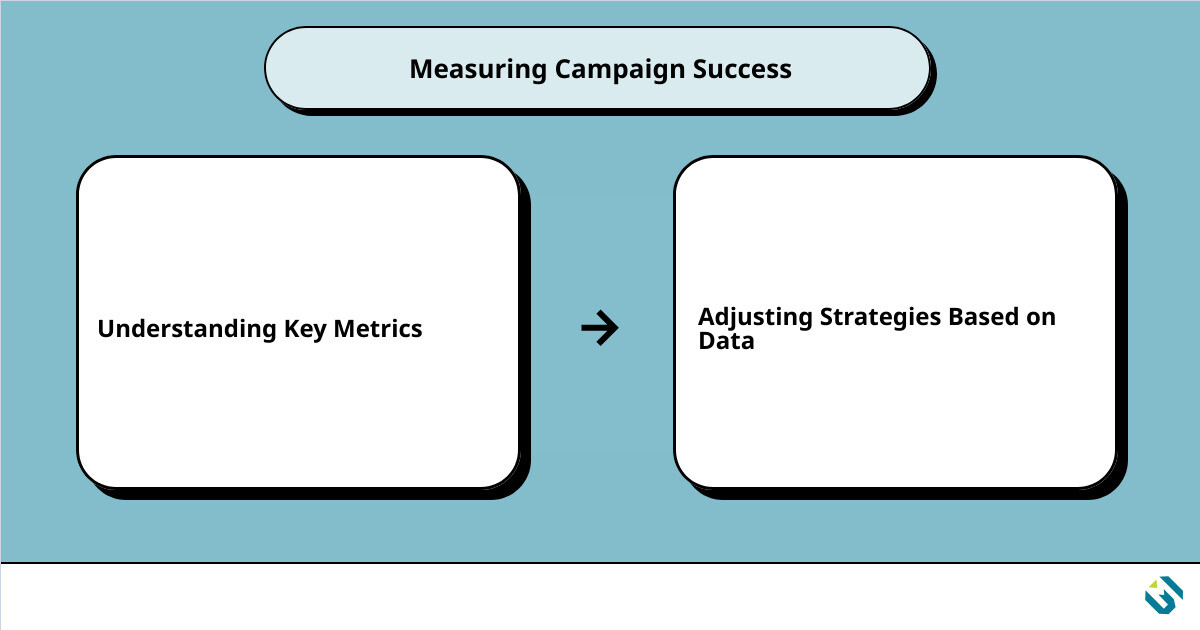In the cluttered and competitive market of HR technology, standing out can seem like an uphill battle. That’s where demand generation campaigns come in. These tailor-made strategies don’t just boost brand awareness, they build credibility, trust, and most importantly, they drive high growth. Welcome to the exciting world of demand generation campaigns!
Demand generation campaigns are more than just marketing strategies. They’re a carefully orchestrated series of touchpoints designed to create interest and demand for your products or services. They’re about forging deeper relationships with your audience, and ultimately, about creating a customer base that sticks around for the long haul.
In a data-driven era, these campaigns are built on a deep understanding of the buyer’s persona, the right selection of marketing channels, and the effective use of lead magnets. They involve meticulous monitoring of campaign performance and a keen eye on key metrics.
This comprehensive guide will delve into the goals of demand generation campaigns, the key steps in creating a successful one, and ten irresistible campaign ideas that you can start implementing today. We will also discuss the tactics for successful demand generation campaigns and how to measure their success. By the end, you will be all set to revolutionize your lead generation with irresistible demand generation campaigns. So let’s dive in and discover how to propel your HR technology company to new heights with demand generation.
Understanding the Goals of Demand Generation Campaigns
In the realm of marketing, every campaign serves a unique purpose. For demand generation campaigns, the goal is to not only build brand awareness but also create a need for your products or services in the minds of potential customers. Let’s delve into the four key goals of demand generation campaigns.
Raising Awareness About the Product
The first step towards generating demand is making your target audience aware of your product or service. This involves creating compelling content, utilizing social media marketing and SEO strategies to increase visibility, and positioning your brand as a solution to your customers’ problems. Remember, your goal here isn’t immediate conversion, but rather spreading the word about your HR technology company and the solutions it offers.
Boosting Interest in Customers’ Minds
Once you have successfully raised awareness about your brand, the next goal is to pique the interest of your potential customers. This involves sharing more detailed information about your products or services, highlighting their unique selling points, and explaining how they address the pain points of your target audience. This could be through webinars, downloadable whitepapers, or free trials, which provide value and encourage further engagement with your brand.
Establishing a Market Position for Your Product
Establishing a strong market position for your product is essential for demand generation. This involves showcasing the unique value proposition of your product or service, and differentiating it from competitors. You want to position your brand as the go-to solution for your customers’ needs, helping you stand out in a cluttered market.
Persuading the Customer to Give the Product a Positive Review
The final goal of a demand generation campaign is to persuade customers to not only purchase your product but also to share positive reviews about it. This could involve showcasing customer testimonials, case studies, or engaging with customers on social media to encourage them to share their positive experiences. These reviews can greatly enhance your brand’s credibility and further drive demand.
In essence, a successful demand generation campaign requires a strategic approach that gradually transforms an unaware prospect into a committed customer. By understanding and focusing on these key goals, you can effectively drive your HR technology company’s growth and establish a strong market position.
Key Steps in Creating a Successful Demand Generation Campaign
To implement a winning demand generation campaign for your HR technology company, there are five critical steps you must follow. These steps will ensure that your campaign is not only strategically sound but also designed to meet the specific needs of your target audience.
Setting Clear Goals for Your Campaign
The first step in creating a successful demand generation campaign is defining clear and measurable goals. Whether it’s increasing brand awareness, generating high-quality leads, or driving conversions, having a clear understanding of what you want to achieve will guide your campaign strategy. According to a recent CoSchedule study, 70% of successful marketers set clear goals before launching a campaign, and 47% see better growth in campaigns with clear goals.
Defining the Buyer’s Persona
Understanding who your target audience is, what their needs are, and how they make purchasing decisions is crucial in crafting a campaign that resonates with them. To define your buyer’s persona, leverage first and second-party intent data. First-party intent data can be obtained by observing your customers’ interaction with your on-site content, while second-party data involves sharing your content on other websites and monitoring its performance. At UnboundB2B, all marketing campaigns start by building a buyer persona, ensuring that the campaign targets individuals genuinely interested in the offered products or services.
Selecting the Right Marketing Channels
Not all marketing channels are created equal. Some might be more effective in reaching your target audience than others. Therefore, it’s crucial to identify which channels your potential customers frequent and focus your efforts there. Whether it’s social media, email marketing, content marketing, or paid advertising, choosing the right channels can significantly impact the success of your demand generation campaign.
Using Lead Magnets Effectively
Lead magnets are an effective way to lure potential customers into your sales funnel. These could be anything from informative eBooks, free trials, webinars, or even fun quizzes. The key is to provide value to your audience, making them more likely to provide their contact information in return.
Setting Metrics and Monitoring Campaign Performance
Finally, it’s crucial to track your campaign’s performance to determine its effectiveness. Set key performance indicators (KPIs) that align with your campaign goals and monitor them regularly. This could include metrics such as the number of new leads generated, conversion rates, or website traffic. Monitoring these metrics will provide valuable insights into what’s working and what isn’t, allowing you to tweak your campaign for optimal results.
By following these key steps, you’ll be well on your way to creating a demand generation campaign that not only captures your audience’s attention but also converts them into loyal customers. This is the essence of revolutionizing your lead generation with demand generation campaigns.
Ten Irresistible Demand Generation Campaign Ideas
In the rapidly changing digital landscape, creating attention-grabbing demand generation campaigns is more important than ever. It’s not enough to simply catch the eye of your target audience; you must engage them, educate them, and persuade them to take action. With that in mind, let’s dive into ten irresistible demand generation campaign ideas that can help you achieve these goals and drive revenue growth.
Creating Informative Content
Creating informative content is at the heart of any successful demand generation campaign. By producing content that addresses your audience’s pain points and interests, you can position your brand as an industry authority and provide value to your potential customers. This can be in the form of blog posts, case studies, e-books, or even industry-specific news.
Partnering with Influencers
Influencer marketing can give your demand generation campaigns a significant boost. By partnering with influencers within your industry, you can extend the reach of your campaign and leverage the trust that these influencers have built with their audience. This strategy can result in high ROI, as seen in the case of designer Gaurav Gupta’s association with IBM’s Watson.
Hosting Engaging Webinars
Webinars are a fantastic way to connect with your audience on a personal level. They allow you to present your products or services to potential customers, receive real-time feedback, and deliver a personal touch that many digital marketing channels lack. Companies like CISCO have successfully leveraged webinars, leading to high conversion rates.
Launching Insightful Podcasts
The popularity of podcasts continues to rise, making them an effective channel for demand generation. By creating a podcast, you can reach a vast audience, spread brand awareness, and connect with your audience on a deeper level. CRM brands like Salesforce have successfully utilized this strategy, hosting podcasts on various topics to engage their audience.
Publishing Industry Reports
Publishing insightful and original industry reports can help validate your offerings and position your brand as a thought leader. By backing up your claims with data and research, you can build trust with your audience and provide them with valuable information that can guide their decision-making process.
Offering Free Solutions or Trials
Offering free solutions or trials of your product is a powerful way to demonstrate its value to potential customers. This can lead to higher conversion rates, as seen in the case of B2B companies that offer free trials.
Syndicating Content Across Channels
Syndicating your content across various channels can help you reach a larger audience and increase brand awareness. This can involve sharing your content on social media platforms, guest blogging on other websites, or even partnering with other brands to co-create content.
Sending Personalized Emails
Email remains an effective channel for nurturing leads and driving conversions. By personalizing your emails and segmenting your audience, you can deliver the right message to the right person at the right time, increasing your chances of conversion.
Designing Fun Quizzes
Quizzes can be a fun and engaging way to interact with your audience. They not only provide entertainment but can also gather valuable data about your audience’s preferences and behaviors, which can be used to tailor your future marketing efforts.
Involving Employees in Campaigns
Finally, involving your employees in your demand generation campaigns can add a personal touch and show your brand’s human side. This can involve sharing employee stories, showcasing behind-the-scenes content, or even having employees take over your social media channels for a day.
Each of these campaign ideas can help you attract and engage your target audience, ultimately leading to increased lead generation and revenue growth. The key is to understand your audience, deliver value at every stage of their journey, and continuously measure and adjust your strategies based on data.
Tactics for Successful Demand Generation Campaigns
Unleashing the power of your lead generation is all about leveraging the right tactics. In this section, we’ll dive into nine proven strategies to fuel your demand generation campaigns, each designed to amplify your brand’s visibility, engage your prospects effectively, and ultimately drive high growth for your HR technology or workforce technology business.
Collaborating with Influencers
Influencer collaboration is an excellent way to boost your brand’s credibility and reach a broader audience. By teaming up with experts in your industry for webinars or content creation, you can leverage their influence to attract more potential customers. Remember, the content must provide genuinely useful insights and solutions for your audience.
Offering Free Trials
People love free stuff, especially when it carries real value. Offering a free trial of your services not only attracts potential customers but also allows them to experience the value of your offerings firsthand. A report shows B2B companies that offer free trials see an average conversion rate of 66%.
Sending Corporate Gifts
Sending corporate gifts can be a unique way to create a memorable impression on your prospects. It not only shows appreciation but also keeps your brand at the forefront of their minds.
Creating Personalized Email Campaigns
Emails can be a powerful tool for demand generation, but they must be optimized. Personalized emails, A/B testing, and audience segmentation can significantly increase engagement rates and conversions.
Developing Educational Content
Sharing educational content is a fantastic way to engage your B2B audience. This could be in the form of downloadable resources, blog posts, or webinars. Educational content not only builds interest in your brand but also positions you as a thought leader in your industry.
Making Content Interactive
Interactive content, such as online calculators or quizzes, can drastically boost user engagement. In fact, it has been found to increase engagement twice as much as static content. Consider creating interactive tools that help solve your audience’s problems.
Encouraging User-Generated Content
User-generated content (UGC) is a fantastic way to foster community and engage your audience. Encourage your customers to share their experiences or ideas related to your product or service. This not only provides valuable insights but also builds trust among potential customers.
Creating Scoring Models for Leads
Implementing a lead scoring system can help you identify the most likely prospects to convert. By assigning values to various actions or behaviors, you can gauge interest and intent, enabling you to tailor your approach accordingly.
Engaging with the Audience on LinkedIn
LinkedIn is a goldmine for B2B marketers. Engage with your audience by sharing insightful content, participating in discussions, and connecting with industry professionals. This will not only boost your brand visibility but also build credibility and trust in your market.
By executing these tactics in your demand generation campaigns, you’ll be well on your way to capturing the attention of your ideal customer profile audience, building brand awareness, credibility, and trust, and ultimately driving high growth for your business.
Measuring the Success of Your Demand Generation Campaigns
Harnessing the power of demand generation campaigns isn’t just about launching them into the digital wild and hoping for the best. To truly revolutionize your lead generation, it’s vital to measure the success of these campaigns, analyze key metrics, and adjust your strategies based on data-driven insights.
Understanding Key Metrics
In the bustling world of HR and workforce technology, it’s not enough to simply deploy a campaign. You need to know how it’s performing. Tracking the right metrics is akin to using a compass on a treasure hunt. It guides you to your desired destination – in this case, your marketing objectives.
Not all metrics are created equal. While vanity metrics like page views or social media followers might give you a warm fuzzy glow, they may not necessarily contribute to business growth. Instead, focus on metrics that tie directly to your bottom line:
Content Performance: This metric encompasses user behavior, engagement with your content, and overall traffic and SEO performance. It helps you understand which content resonates with your audience and drives engagement.
Inbound Leads: This tracks the prospect information coming in through inbound channels like your website, giving insights into the success of your content and SEO strategy.
Sales Qualified Leads (SQL): These are the leads ready to move into your sales process. They’ve shown a higher level of interest and engagement, making them more likely to become customers.
Close Rate: This measures the number of leads that convert to customers, providing a clear indicator of the effectiveness of your sales process and the quality of your leads.
Cost Per Acquisition (CPA): This calculates the total cost to acquire one paying customer on a campaign or channel level, helping you understand the financial efficiency of your demand generation efforts.
Adjusting Strategies Based on Data
Now, armed with your treasure trove of data, it’s time to make data-backed insights work for you. Demand generation isn’t static – it’s a dynamic, continuous process that requires constant fine-tuning.
If a particular piece of content isn’t resonating with your audience, it’s time to pivot and try a different approach. Are your inbound leads not converting into SQLs? This could indicate a need to refine your lead nurturing process or adjust your targeting strategy.
Remember, the effectiveness of your demand generation strategy is only as good as the results it delivers. By making data-driven adjustments, you can ensure your campaigns are always on the path to success, helping you to stand out in the cluttered market and build a strong digital footprint.
Lastly, don’t forget the role of marketing automation software in streamlining and enhancing your demand generation strategy. Platforms like Hubspot, ActiveCampaign, and Optimizely offer powerful features that can amplify your efforts, automate repetitive tasks, and provide valuable insights into your audience’s behavior.
By measuring your success and leveraging the right tools, you’re well on your way to revolutionizing your lead generation with irresistible demand generation campaigns.
Conclusion: Revolutionizing Lead Generation with Demand Generation Campaigns
It’s time to take a step forward, embracing the power of demand generation campaigns to revolutionize your lead generation efforts. As an HR technology or workforce technology company, tapping into the potential of demand generation can be the game-changer you need to stand out in a cluttered market, cultivate a strong digital footprint, and drive high growth.
We’ve explored the critical components of a successful demand generation campaign, from setting clear goals and defining your buyer’s persona, to selecting the right marketing channels and monitoring campaign performance. We’ve even dived into some irresistible campaign ideas that can make your brand memorable and your offerings irresistible.
Demand generation is not just about selling, it’s about creating a need. It’s about understanding your target audience’s journey, reaching out to them, and showing them why they need your product or service. In this way, demand generation is the bridge that connects awareness to interest, interest to consideration, and consideration to conversion.
Remember, the key to a successful demand generation campaign lies in its data-driven approach. Whether it’s through collaborating with influencers, offering free trials, or creating personalized email campaigns, every step should be measured, analyzed, and adjusted based on data. This data-driven approach ensures that your demand generation strategies are always evolving, always improving, and always delivering results.
Ultimately, the impact of a powerful demand generation campaign transcends beyond generating leads. It builds brand awareness, credibility, and trust, fostering long-term customer loyalty. It’s about creating a legacy customer base that will drive revenue growth for your business.
So, are you ready to revolutionize your lead generation with irresistible demand generation campaigns? The future of your business growth depends on it. Remember, every journey starts with a single step – and that step could be your first demand generation campaign. Let’s unleash your untapped potential and drive massive growth for your business with revolutionary demand generation methods. The future of your business growth is in your hands.





